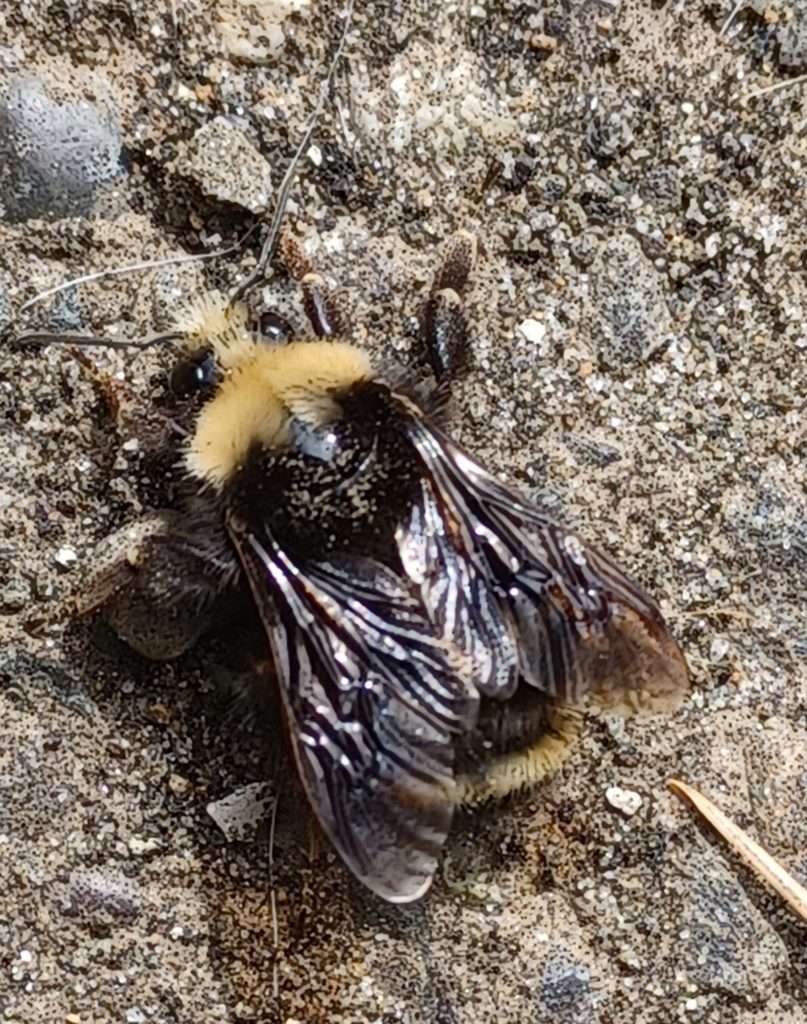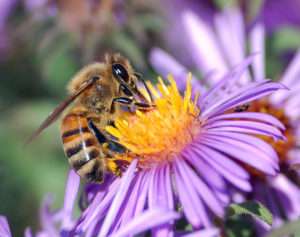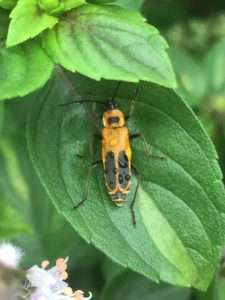
“Save the bees!”
That’s been the clarion call not only from environmental groups but, increasingly, businesses and individuals as well. We’ve been seeing a precipitous drop in the number of insects and other terrestrial and freshwater invertebrates for decades. However, it’s only been in the past decade or so that the public at large has really begun to grasp the connection between “fewer bees” and “less food.” This awareness campaign has been helped along by statistics like “one out of every three bites of food you take was pollinated by bees”, and boxes of Honey Nut Cheerios featuring calls to plant native wildflowers.
Now, I’m not going to complain about people becoming more invested in where their food comes from, nor the preservation of the insects that pollinate a large proportion of our food. The issue that I and many other ecologically-minded folks have seen is that most of the attention is on the European honey bee (Apis mellifera), which was imported to the US centuries ago. While they are incredibly important for pollinating fruit trees, vegetables, and many other domesticated crops, they don’t add a whole lot to the existing ecosystems here, which did just fine for thousands of years without them. In fact, they often out-compete native bees and other pollinators, especially when food is scarce.

Native pollinators are those bees, wasps, butterflies, moths, flies, beetles, birds, bats, and other animals that evolved alongside the plants they pollinate; these interdependent relationships took many millennia to develop. In fact, some plants can only be pollinated by one or two species at best, and if the pollinator disappears, so does the plant. Lose enough species, and an ecosystem will collapse.
There are thousands of species of native pollinators out there; the United States alone has 3,600 species of native bee, of which the yellow-faced bumblebee at the top of this article is just one example. While pollination is an important ecological task they undertake throughout their lives, many pollinator species engage in other beneficial activities. Birds, bees, and wasps are all active hunters that help keep insect populations in check, to include garden pests, and everyone’s least favorite summertime visitor–the mosquito. Many pollinating insects end up as food themselves and are a crucial part of the food web in their ecosystem; for example, the diet of many baby songbirds consists of 75% insects and other invertebrates! Our native pollinators truly are beneficial on many levels.
The biggest threat to native pollinators–and in fact to all threatened and endangered species–is habitat loss. I’m not just talking about grass lawns and golf courses, though these are certainly chewing up enough habitat. Habitat loss also includes clearcut forests, strip-mined mountains, heavily polluted waterways, drained wetlands, and meadows paved over for yet another strip mall. And without a place to live, imperiled species are much less likely to be able to survive other threats like pollution, poaching, and invasive species.

Another serious threat to native pollinators is the widespread use of pesticides. Largely applied to millions of acres of cropland every year, pesticides also find frequent use everywhere from decorative plantings along parking lots to personal lawns and gardens. These chemicals do not pick and choose their targets; any insect that comes into contact with them can be killed. The most notorious examples are neonicotinoids; for example, even at sublethal levels they can damage a bees’s ability to find its way back to the hive or forage efficiently. Yet nursery plants are routinely treated with these before they even make into the hands of consumers, and pesticides are widely available in garden stores.
How can you help native pollinators? If you have a yard or garden, convert at least some of it to native plants. Your state may have a native plant society that can help you figure out the best species to plant. If you are in the United States or Canada, the Xerces Society has thorough lists of native plants for your state/territory here: https://xerces.org/pollinator-conservation/pollinator-friendly-plant-lists . Even a small patch of habitat can become an important oasis for your local native pollinators and other wildlife, so don’t worry that yours may not be large or elaborate enough.

You can also pledge not to use pesticides in your yard or garden. There are plenty of ways to control garden pests and keep plants healthy that involve less harmful means. In fact, one of the best ways to keep your plants safe from pests is to make sure they’re healthy and have a robust immune system, so make sure all your plants are getting the correct amount of water, fertilizer, and other nutrients. Urge garden stores and other companies to cease using pesticides not only on the plants they sell, but on any landscaping on their property, and contact your elected officials to tell them to support legislation limiting the use of these chemicals.
Finally, keep your eyes peeled for native pollinators! By learning how to identify insects, birds, and other wildlife, you can familiarize yourself with the species in your area, and keep track of how often you see them year after year. That will help tell you how healthy your local ecosystem is, including the habitat you offer in your own back yard.
Further reading:
https://xerces.org/pollinator-conservation
https://www.nrcs.usda.gov/Internet/FSE_DOCUMENTS/stelprdb1048334.pdf
